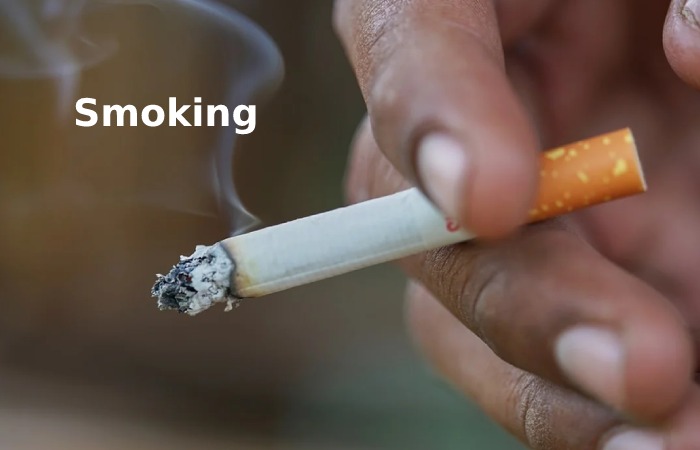Eyelid surgery or blepharoplasty is one of the most common facial plastic surgery procedures. The procedure tightens sagging skin around the eyes and enhances a person’s appearance.
Blepharoplasty also eliminates any visual obstruction, removes bags, reduces wrinkles, and helps people look younger. If you are interested in eyelid surgery, consult a certified plastic surgeon and learn all about the surgery.
Table of Contents
What to Expect After the Procedure?
Though eyelid surgery is an outpatient procedure, patients remain in the recovery room for a few hours to ensure they are stable. Immediately after eyelid surgery, a patient can experience some temporary side effects, including:
- Slight pain or discomfort
- Sensitivity to light
- Swelling or bruising
- Blurred vision
- Double vision
- Numb, puffy eyelids
- Watery eyes
Patients are advised to have an important person pick them up from the clinic and stay with them for at least one night.
Tips to Speed up Blepharoplasty recovery
The recovery period from this procedure largely depends on how patients take care of themselves. It is important to note that full healing can take a few months.
Therefore, patients with children, pets, and other critical responsibilities at home should ask a family member or friend to assist them during this time. Learning how to prepare for the surgery will also improve the recovery time.
Here are some tips that a patient should consider to speed up recovery time. Recovery after browlift is a similar process.
1. Take Time Off
Patients need to take it slow and get as much rest as possible after the procedure. As one heals, one must avoid excessive abrasions and movement. Since the bruising and swelling subside after around 10 to 14 days, a patient should plan to take complete relaxation for at least two weeks.
2. Follow Postsurgical Instructions
Plastic surgeons take patients through the procedure, what to expect, and how to prepare for surgery and recovery. To keep away from complications and ensure a speedy recovery, surgeons advise patients on what to do and how to care for their eyes and incisions.
This includes cleaning the eyelids gently, using prescribed eye drops or ointments, not wearing contact lenses for about two weeks, avoiding rubbing the eyes, and more. Patients must follow all the after-care instructions in the letter.
Check this for more info site: www.healthbeautystudio.com
3. Take Prescribed Medications
Apart from after-care instructions, surgeons also prescribe medications to help with the pain and reduce the risk of infections. These medications can include aspirin, ibuprofen, and naproxen sodium.
Patients should only take the prescribed medications and avoid taking any other medications or supplements, which may increase bleeding. A patient should consult their doctor before using any other medications.
4. Get Enough Sleep

The body needs a lot of rest to heal. To speed up recovery, patients should ensure they get a good night’s sleep. Also, they should nap whenever they feel tired during the day. This is why it is important to take time off from work and focus on recovery.
Patients should also sleep with their heads raised above the chest for the first few days after the procedure.
5. Be Patient
Patients should have realistic expectations. The recovery process takes time, and one may look puffy after the surgery. The best thing is to remain patient, take photos one week after eyelid surgery, and compare the results after two weeks or a month.
6. Protect the Eyes
Protecting the eyes from sunlight, wind, and other elements is vital during recovery. If a patient has to go out, they should wear a hat and dark sunglasses for protection. They should also apply sunscreen and avoid staying under direct sunlight for a long.
7. Avoid Strenuous Activity
For the first few weeks after the surgery, a patient should avoid any vigorous or strenuous activities such as sports, intensive exercise, aerobics, and lifting heavy items. Such activities add to blood flow to the eyes and can cause the surgical area to bleed.
8. Use Cold Compresses
Patients should wait to have some swelling and bruising for at least two weeks. To ease the swelling, they can use an ice pack or cold compresses.
Pacing an ice pack over the surgical area for about 10 minutes every hour on the first day and at least three to four times each day after that will help reduce the swelling. Keep the skin with a towel before applying the ice pack.
9. Avoid Eye Strain
It is also important to refrain from straining the eyes. This means that a patient should avoid watching too much TV, reading, or using a computer or a smartphone for a long. They should also avoid activities that can cause the eyes to dry up and give the eyes a chance to rest.
10. Stop Smoking

Patients who smoke should quit until they fully recover. Smoking slows down healing and also increases the risk of infection after the surgery. To avoid complications and speed up recovery, one should stop smoking at least six weeks before surgery and only resume once they recover.
11. Keep Follow-Up Appointments
Surgeons schedule follow-up appointments for postsurgical evaluations. During the appointment, they will check the incisions, remove stitches, and check the overall recovery progress. Patients should keep these appointments even if they are recovering well and have no complications.

